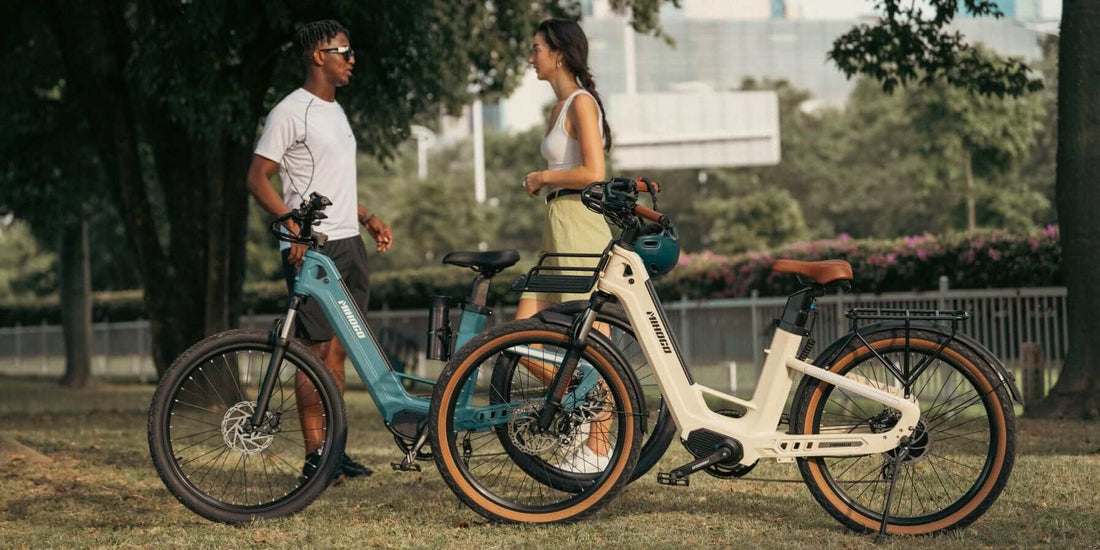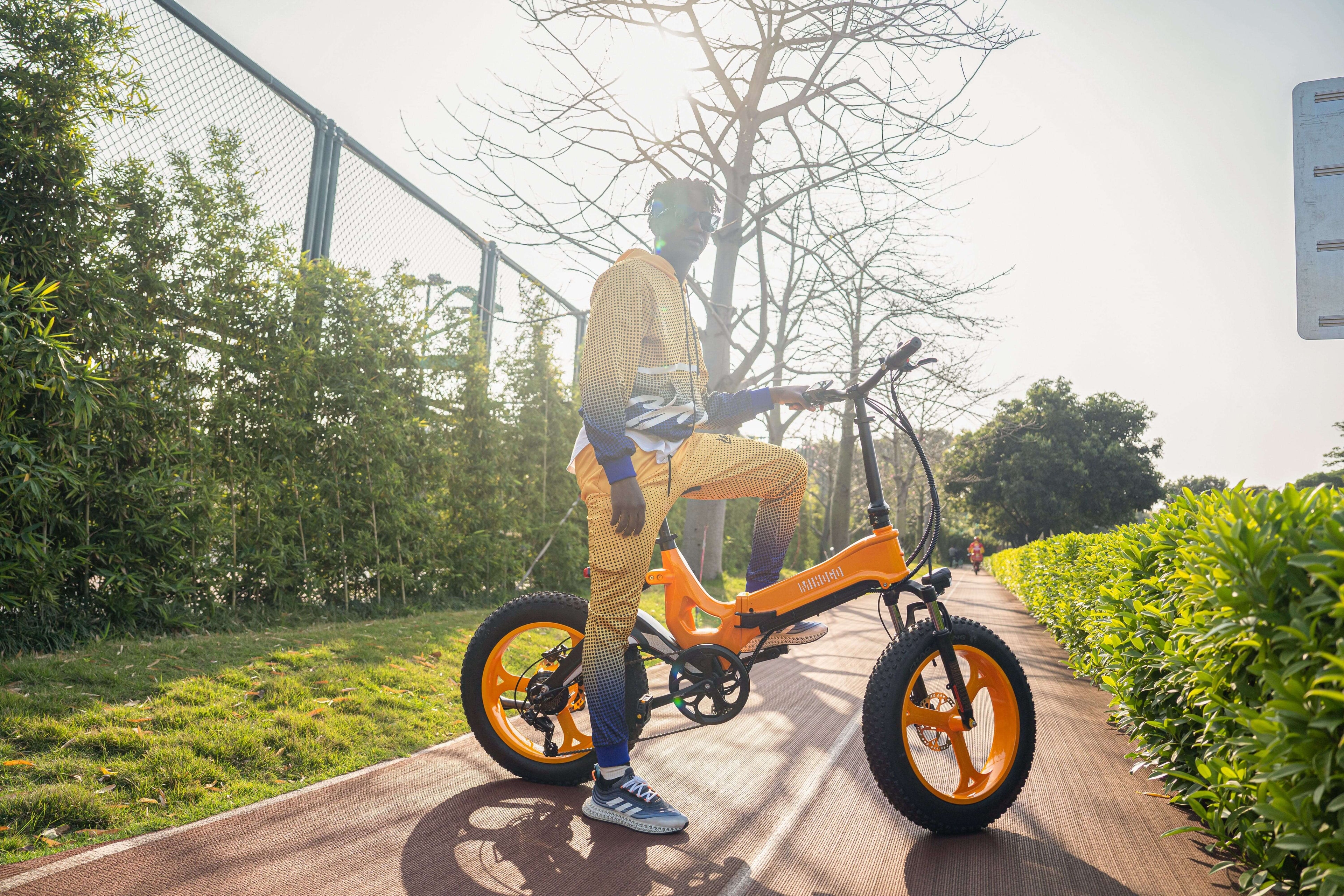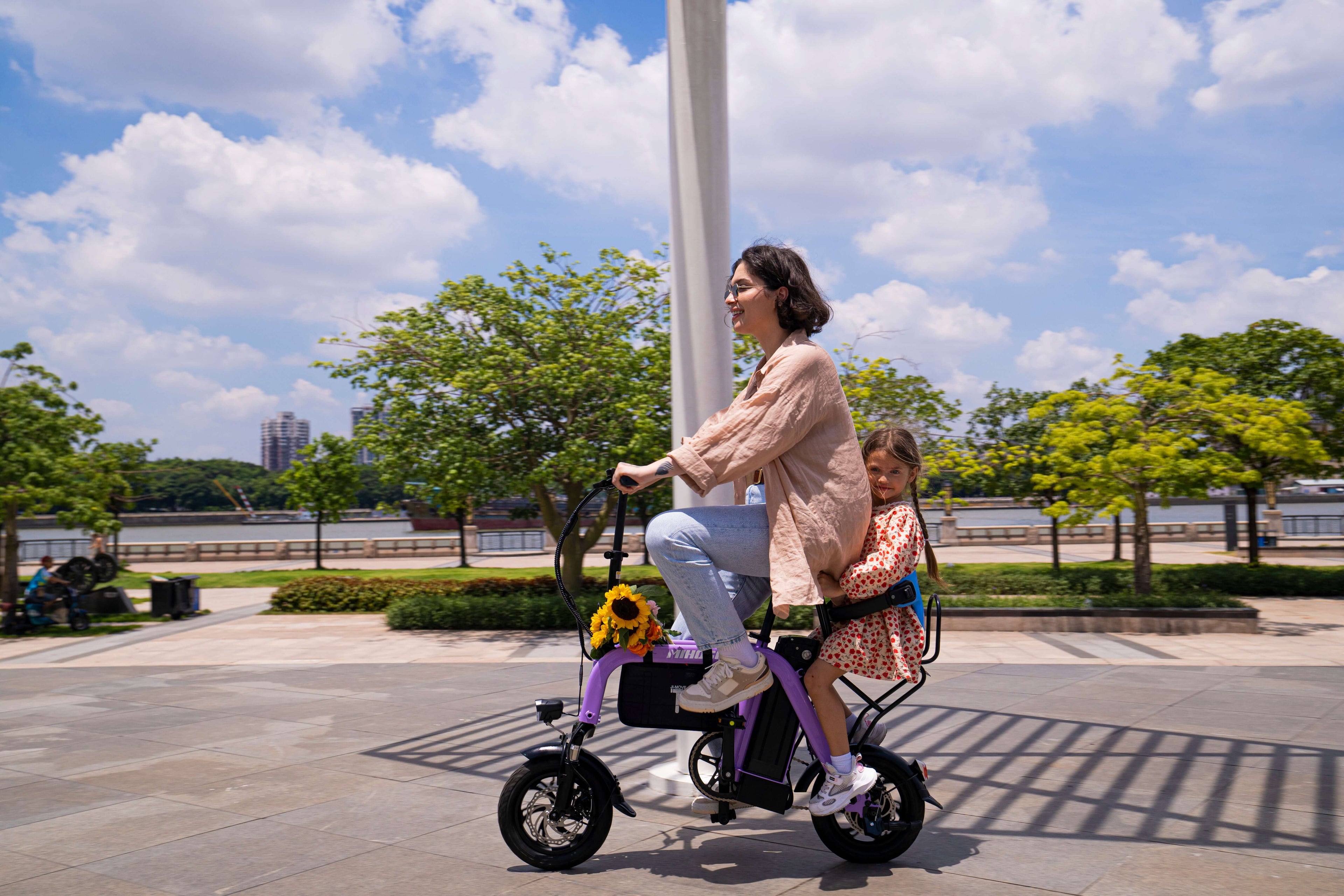Why Winter E-Biking is Worth the Effort
Electric bikes can handle temperatures as low as -5°F for riding, making them viable year-round transportation. Winter e-biking offers unique advantages: reduced traffic congestion, improved air quality from fewer cars, and the satisfaction of staying active during colder months.
Essential Winter E-Bike Battery Care
Protecting Your Mihogo Battery in Cold Weather
E-bike batteries are vulnerable in freezing winter conditions, with trouble charging properly once temperatures drop below 32°F. Here's how to protect your Mihogo e-bike battery:
Pre-Ride Battery Preparation:
- Store your battery indoors when not riding
- Preheat the battery by plugging it in for a few minutes before riding
- Allow cold batteries to warm to room temperature before charging
- Consider a battery insulation wrap for extended cold exposure
During Your Ride:
- Expect reduced range in cold weather - this is normal
- Monitor battery levels more frequently
- Use lower assist levels to conserve power
- Keep spare batteries warm if carrying extras
Mihogo Model Terrain Recommendations
Best Mihogo Models for Winter Conditions
Mihogo ONE Utility EBIKE - Best for Winter Commuting
- Specifications: 750W motor, 167-mile range, 25MPH top speed
- Winter Applications: Ideal for daily commuting and utility tasks
- Terrain Suitability: Excellent for plowed city streets, light snow conditions
- Winter Advantages: High range capacity accounts for cold-weather battery reduction
Mihogo Air750 Max - Premium Cold Weather Performance
- Specifications: Carbon fiber frame, 750W motor, 121-mile range
- Winter Applications: Performance-oriented winter riding
- Terrain Suitability: Best for maintained bike paths and dry winter roads
- Winter Advantages: Lightweight carbon frame reduces effort in challenging conditions
MIHOGO RX 2.4 - Versatile Winter Folder
- Specifications: 500W motor, 40-mile range, folding design
- Winter Applications: Mixed urban and light trail riding
- Terrain Suitability: City streets, bike paths, light snow
- Winter Advantages: Folding design allows easy indoor storage
Mihogo Mini - Compact Winter Solution
- Specifications: 350W motor, 62-mile range, compact design
- Winter Applications: Short commutes and neighborhood rides
- Terrain Suitability: Cleared sidewalks, bike paths, minimal snow
- Winter Advantages: Lightweight and maneuverable in tight spaces
Winter Riding Safety and Technique
Essential Winter E-Bike Safety Tips
In winter weather conditions like snow and ice, you need to slow down and ride more like a turtle and less like a hare. Follow these safety protocols:
Speed and Control:
- Reduce your power-assist level in snowy conditions
- Test your brakes before your ride to gauge traction levels
- Allow extra braking distance for turns and downhill sections
- Avoid sudden acceleration or "lurching" movements
Visibility and Awareness:
- Use bright LED lights during shorter winter days
- Wear reflective clothing and gear
- Install additional reflective tape on your Mihogo frame
- Be extra alert for ice patches and road hazards
Winter E-Bike Maintenance Excellence
Post-Ride Care for Your Mihogo
In winter, it's extra important to clean your bike after every ride, especially after riding in snowy or wet conditions. Salt and road treatments can be caustic to bicycle components.
Daily Maintenance:
- Wipe down frame and components after each ride
- Clean drivetrain to prevent salt corrosion
- Lubricate your chain at least every 60 to 150 miles
- Check tire pressure regularly (cold weather reduces pressure)
Weekly Deep Cleaning:
- Rinse bike with gentle degreaser indoors if possible
- Inspect brakes and cables for wear
- Clean battery contacts and connections
- Check for any freeze damage to components
Winter Tire and Traction Solutions
Optimizing Your Mihogo for Winter Terrain
If you want to ride in the snow, it is best to use a bike with appropriate tires. Use tires with a broader surface area or larger treads, like fat tires. Consider these tire options for your Mihogo:
Recommended Tire Upgrades:
- Studded tires for icy conditions
- Wider tread patterns for snow grip
- Lower tire pressure for increased contact area
- Puncture-resistant winter-specific tires
Winter Gear and Clothing Essentials
Staying Warm During Cold Weather Rides
The right choice of clothing easily beats cold weather. Layers are essential to add or remove clothing to help regulate your temperature.
Essential Winter Gear:
- Moisture-wicking base layers
- Insulating mid-layers
- Windproof outer jacket
- Waterproof winter boots
- Insulated gloves or heated grips
- Thermal helmet liner or winter cycling cap
Mihogo E-Bike Advantage: One of the advantages of an e-bike in winter is that you can control how much effort you make. Use eco-mode for more body heat generation, or higher assist levels to stay comfortable without overexertion.
Advanced Winter E-Biking Techniques
Mastering Winter Terrain with Your Mihogo
Snow Riding Techniques:
- Maintain steady, smooth pedaling
- Use lower gears for better control
- Lean into turns gradually
- Keep weight centered over the bike
Ice Navigation:
- Reduce speed significantly
- Use gentle steering inputs
- Avoid sudden braking
- Consider dismounting for safety when necessary
Storage and Seasonal Preparation
Winterizing Your Mihogo E-Bike
Pre-Winter Checklist:
- Full battery charge before storage
- Clean and lubricate all moving parts
- Check tire condition and pressure
- Inspect brake pads and cables
- Store in a dry, temperature-controlled environment
Mid-Winter Maintenance:
- Monthly battery conditioning charges
- Regular cleaning after salt exposure
- Component inspection for wear
- Tire pressure monitoring
Planning Your Winter Routes
Route Selection for Cold Weather Riding
Plan shorter routes: Winter riding takes more energy, so shorter routes can help you manage fatigue and stay safe in changing weather conditions.
Ideal Winter Routes:
- Well-maintained bike paths
- Plowed city streets
- Avoid areas prone to ice accumulation
- Plan for heated rest stops on longer rides
Route Safety Considerations:
- Check weather forecasts before departure
- Inform others of your planned route
- Carry emergency supplies
- Have backup transportation plans
The Environmental Benefits of Winter E-Biking
Winter e-biking with your Mihogo contributes to reduced carbon emissions during peak heating seasons. One e-bike is believed to cut down on about 225 kilograms of CO₂ emissions every year, making year-round riding an impactful environmental choice.
Conclusion: Embrace Year-Round E-Biking
Winter e-biking with Mihogo electric bikes opens up a world of cold-weather adventure. With proper preparation, the right model for your terrain, and consistent maintenance, you can enjoy safe, comfortable rides throughout the coldest months.
Whether you choose the utility-focused Mihogo ONE for daily commuting, the performance-oriented Air750 Max for winter training, or the compact Mini for neighborhood rides, each model offers unique advantages for cold-weather cycling.
Ready to start your winter e-biking journey? Explore our full collection of winter-ready electric bikes and discover which Mihogo model best suits your cold-weather adventures.
Internal Links for Future Content:
- E-Bike Battery Care Guide - Learn advanced battery maintenance techniques
- E-Bike Maintenance Schedule - Complete seasonal maintenance checklist
External References:
- Winter Cycling Safety Guidelines - National Highway Traffic Safety Administration
- Cold Weather Exercise Safety - Mayo Clinic Health Information
- Electric Bike Regulations - Wikipedia Electric Bicycle Laws Overview








